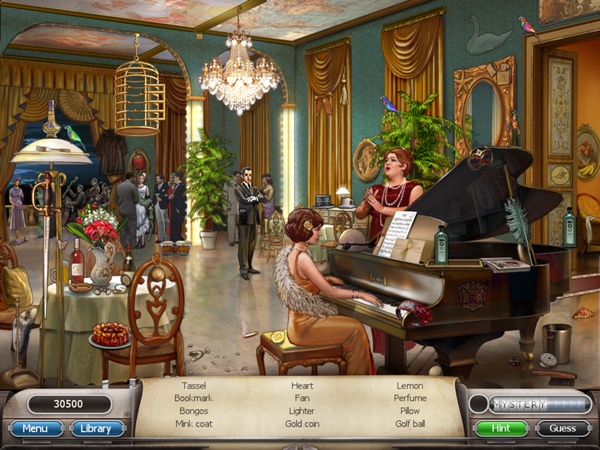
One of the main problems EFL/ESL students in Thailand have is learning new English vocabulary. Often, their grammar skills will be quite good, but without a rapidly increasing vocabulary, communication skills stay low.
A fun way to improve your EFL/ESL students’ English vocabulary is by playing hidden object games (HOGs) on a computer. While they may seem a silly way to pass the time, believe me they’re not. Students I’ve had play hidden object games, over time have had a much faster increase in vocabulary than those who haven’t and had a lot of fun doing it too.
Level: Beginner to Intermediate level students – with no more than 20 students.
Time Needed: 50 minutes to an hour (repeated over several classes to see maximum improvement)
Expected Outcome – Students will be able to participate in fun hidden object games on the computer and learn some of the new vocabulary they’re presented with.
Materials and Resources – computers, hidden object games on CD or access to internet for free games, one dictionary per team, five every day objects you know your students may not know English vocabulary for.
Teaching Procedures:
Step One: I start off the class by showing my students, one by one, five every day objects I doubt they’ll know the English vocabulary for – items like a rolling pin, flashlight (or torch), candlestick, whisk and garlic press. (I just grab things from around my house to take into school or ask other teachers if I can borrow their belongings). (5 mins)
Step Two: After the whole class has realized most of them don’t know the vocabulary for any of these things, I now explain the hidden object game (HOG).
1. Class is put into teams of five, or less if you have a smaller class. (You will need one computer for every five players or less, plus one for the teacher, and the same hidden object game loaded on each computer).
2. One person from each team is designated ‘the clicker’ (ie: the one with the hand on the computer mouse). One person is the ‘seeker’ (person who looks in the dictionary for words). Everyone else is ‘a spotter’ (person who looks for items on the computer screen).
3. I now explain the rules of the hidden object game. A screen will pop up. When I shout ‘Go’, each team must start looking for objects on the computer screen (from the list of objects named at the bottom or side of the screen) and click on them as they find them.
The first team to find all their items, WITHOUT clicking on the ‘hint’ button to cheat, is the winner of that round. You can tell if they clicked on Hint, as it shows in their score on the last screen. Rounds take anything from 5-15 minutes. I also use the ‘untimed’ mode in the game, if possible, so students don’t have added pressure of time running out.
4. Now, I go through one round with myself at the computer (linked to an overhead projector, if your classroom has one), while the class tries to spot items, so they can see how the game works. (10 mins)
Step Three: Set up each team at a computer, with the same game downloaded on each computer. As the hidden objects vary every time you launch a program, students on different computers won’t be looking for the same items, but the level of vocabulary on each game is the same.
Make sure each team has one person with a dictionary looking for words listed at the bottom of the screen they don’t know. Tell them if they cannot figure out what the word means from the dictionary to ask you and you’ll explain. (5 mins)
Step Four: Now, when all teams are ready, shout “Go” and the game begins. Monitor students to ensure they’re managing the game (they’re kids – they’ll figure it out faster than you will).
Play at least two levels of the game if you can, so a couple of teams have a chance to win. (20 minutes)
You can pick up literally thousands of hidden object games on Big Fish Games for just a few dollars each.
